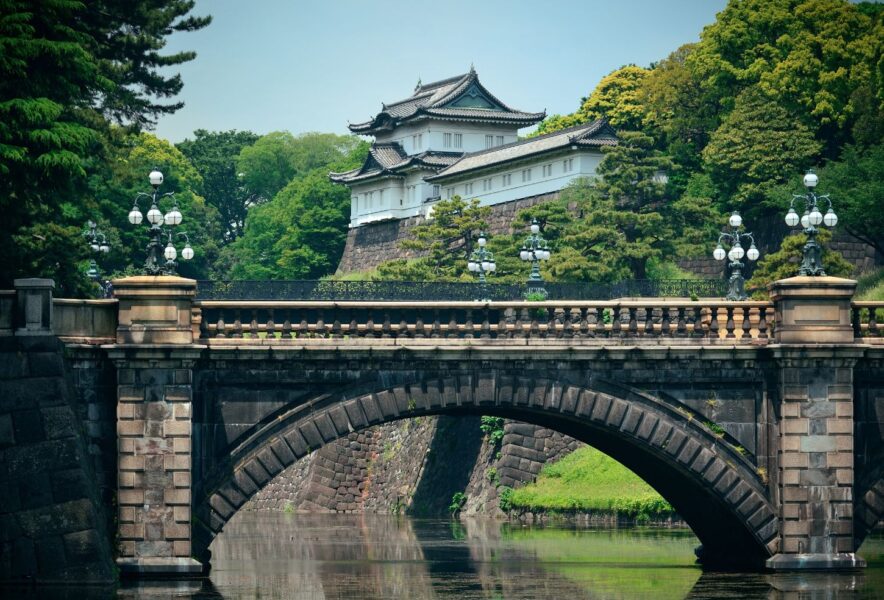Tokyo, Japan’s bustling capital, is a city where tradition and modernity blend seamlessly. One of the most iconic landmarks embodying this blend is the Tokyo Imperial Palace. Nestled in the heart of the city, this magnificent site is a must-visit for anyone eager to delve into Japan’s rich history and culture. Whether you’re a history buff, a lover of architecture, or simply seeking a tranquil escape from the city’s hustle and bustle, the Imperial Palace offers something for everyone. In this guide, we’ll explore the palace’s historical significance, highlight its must-see spots, and provide tips on how to make the most of your visit.
Introduction to the Tokyo Imperial Palace
The Tokyo Imperial Palace, the primary residence of the Emperor of Japan, is a site steeped in history and tradition. Located on the former grounds of Edo Castle, the palace is surrounded by moats, massive stone walls, and serene gardens that make it a haven of peace amid Tokyo’s urban landscape. Although much of the palace is off-limits to the public, there are still plenty of areas open to visitors, offering a glimpse into the imperial family’s world and the history that has shaped modern Japan.
Historical Significance of the Imperial Palace
The Tokyo Imperial Palace stands on a site that has been significant since the 15th century. Originally the location of Edo Castle, the stronghold of the Tokugawa shogunate, the palace became the imperial residence after the Meiji Restoration in 1868 when the capital was moved from Kyoto to Tokyo. The palace has witnessed pivotal moments in Japan’s history, from the end of the feudal era to the country’s post-war reconstruction. The current palace buildings were constructed after World War II, following the destruction of the original structures during the Tokyo air raids.
Key Highlights: Gardens, Gates, and Architecture
While the inner grounds of the palace are rarely open to the public, there are several key highlights that you can explore:
- East Gardens (Kōkyo Higashi Gyoen): Open to the public year-round, the East Gardens offer a peaceful retreat and a chance to see the foundations of the former Edo Castle. The gardens are a beautiful blend of Japanese and Western styles, featuring seasonal flowers, manicured lawns, and historic ruins.
- Nijubashi Bridge: This iconic double-arched stone bridge is one of the most photographed spots in Tokyo. It serves as the main entrance to the palace grounds and is a symbol of the Japanese imperial family.
- Sakurada-mon Gate: One of the main gates leading into the palace grounds, Sakurada-mon is rich in historical significance. It was near this gate that the assassination of Ii Naosuke, a key figure in opening Japan to the West, took place in 1860.
- Fushimi Yagura: A remaining watchtower from the original Edo Castle, Fushimi Yagura offers a glimpse into the castle’s past military significance and the architectural style of the Edo period.
How to Visit: Tours and Access Tips
Visiting the Tokyo Imperial Palace is relatively easy, and it’s a great addition to any Tokyo itinerary. Here are some tips to help you plan your visit:
- Guided Tours: While most of the palace is closed to the public, free guided tours of the palace grounds are offered by the Imperial Household Agency. These tours must be reserved in advance and provide a unique opportunity to see areas that are otherwise off-limits.
- Access: The Tokyo Imperial Palace is a short walk from Tokyo Station, making it easily accessible from anywhere in the city. The closest subway stations are Otemachi Station and Nijubashi-mae Station, both of which are a few minutes away on foot.
- Best Time to Visit: The palace grounds are beautiful year-round, but they are particularly stunning during cherry blossom season in spring and autumn when the leaves change color.
Exploring the Surrounding Area: Nearby Attractions
The area around the Tokyo Imperial Palace is rich in cultural and historical attractions. Here are a few nearby spots you shouldn’t miss:
- Chidorigafuchi Moat: Just a short walk from the palace, this moat is one of Tokyo’s top spots for cherry blossom viewing in the spring. The serene water and overhanging cherry trees make it a picturesque location.
- Hibiya Park: Located near the southern entrance of the palace, Hibiya Park is one of Tokyo’s oldest Western-style parks. It’s a great place to relax after your palace visit and enjoy a picnic or a stroll among the flower gardens and fountains.
- Yasukuni Shrine: A 15-minute walk from the palace, Yasukuni Shrine is dedicated to those who died in service to Japan. The shrine and its accompanying museum offer insights into Japan’s military history.
- Marunouchi District: If you’re interested in shopping or dining, the Marunouchi district, located just outside the palace grounds, offers an array of upscale boutiques, restaurants, and cafes.
Conclusion
The Tokyo Imperial Palace is more than just a residence for the Emperor; it’s a living symbol of Japan’s rich history and cultural heritage. Whether you’re interested in history, architecture, or simply looking for a peaceful place to spend a day, the Imperial Palace is a must-visit destination in Tokyo. Be sure to explore the surrounding areas to fully experience the blend of tradition and modernity that defines this remarkable city.

Comment